Find the right chart for your analysis
This article helps you:
Identify the best Amplitude chart to answer your questions
AMPLITUDE ACADEMY
Getting Started with Amplitude Analytics
Learn the most fundamental features of Amplitude Analytics, including cohorts.
Learn Amplitude AnalyticsAny Amplitude analysis begins with selecting the right chart for the job. This article provides a short summary explanation of all Amplitude's chart types and the types of analysis they're best suited for.
Know your users
Event Segmentation
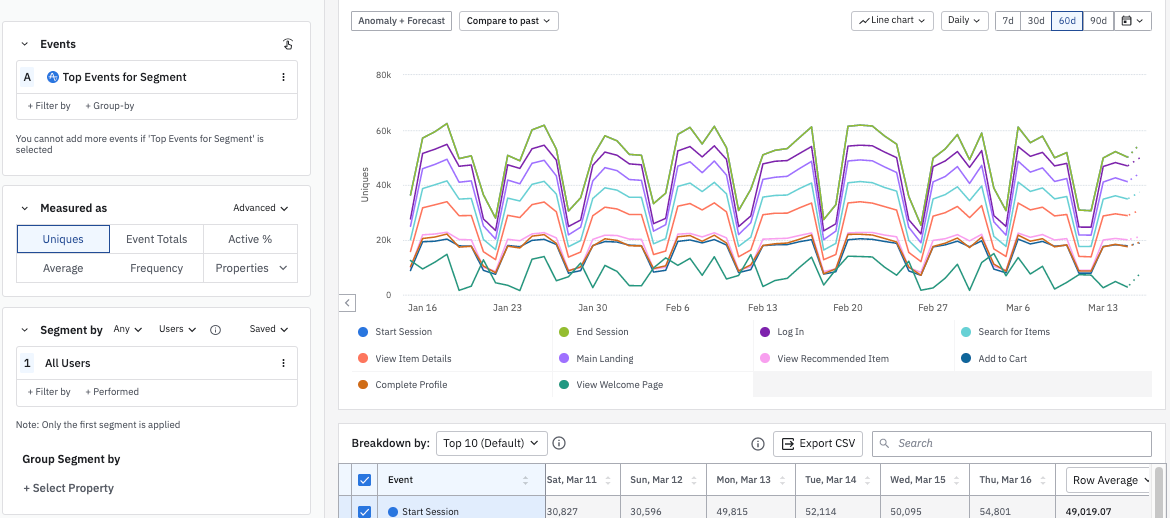
Use this chart to compare or segment your events by user properties or event properties, over a selected time frame. Depending on your Amplitude plan, you can also view your data in real-time, with a frequency of hourly, daily, weekly, monthly, or quarterly.
Data Tables

Data Tables enable multi-metric, multi-dimensional analyses in a single view, allowing you to quickly analyze any combination of user behavior, user attributes, and metrics.
User Composition

This chart shows the breakdown of active users based on a single user property.
User Sessions

The User Sessions chart helps you analyze your users through various sessions-based metrics.
Personas

The Personas chart will automatically group similar users into different clusters. Amplitude determines which users belong in each cluster based on how often they trigger various events. Thus, Personas charts are frequency-based, and are not based on pre-specified rules.
Experiment Results
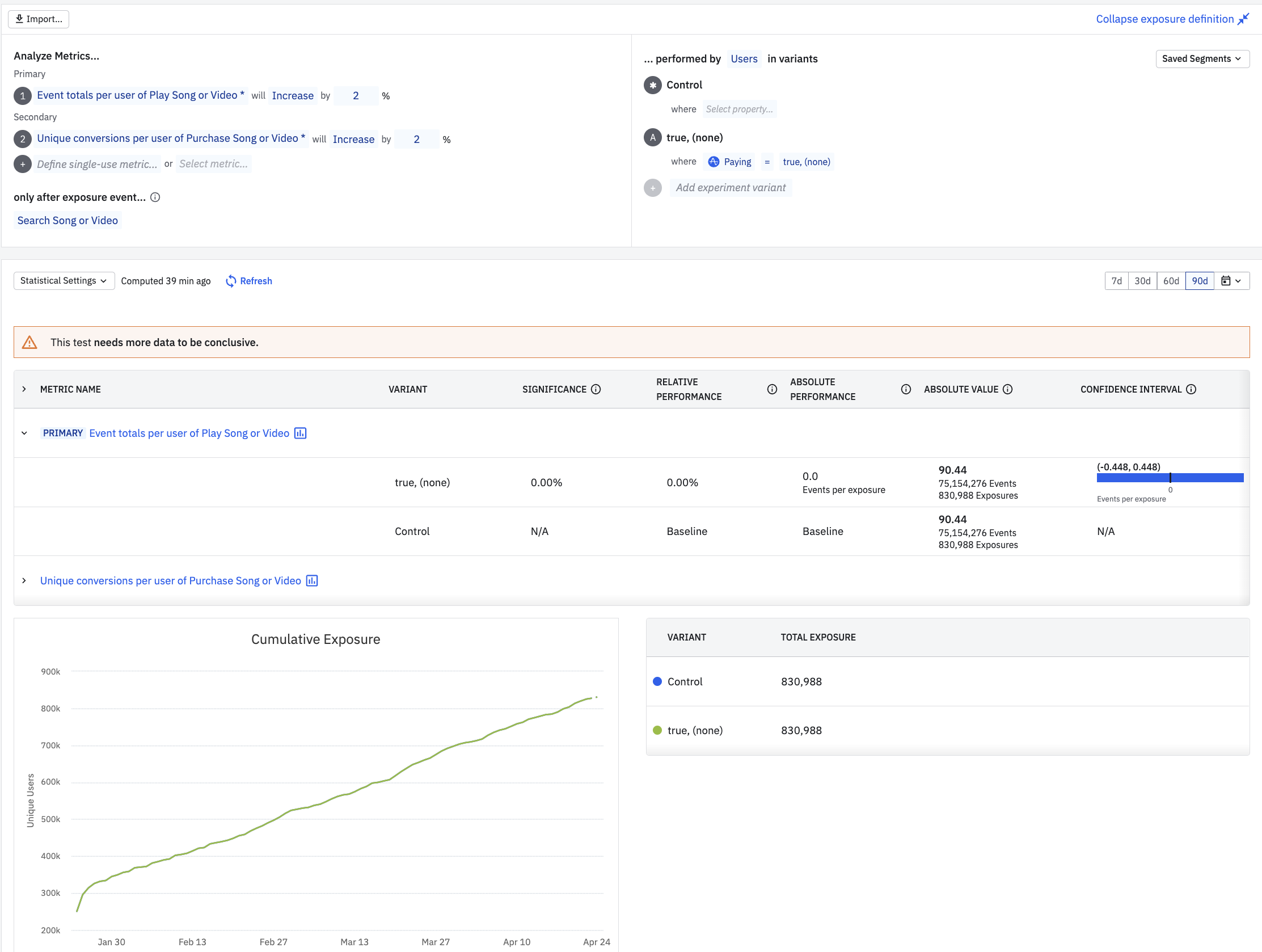
The Experiment Results chart allows you to create an A/B test and helps to identify statistically significant outcomes.
Convert your users
Funnel Analysis
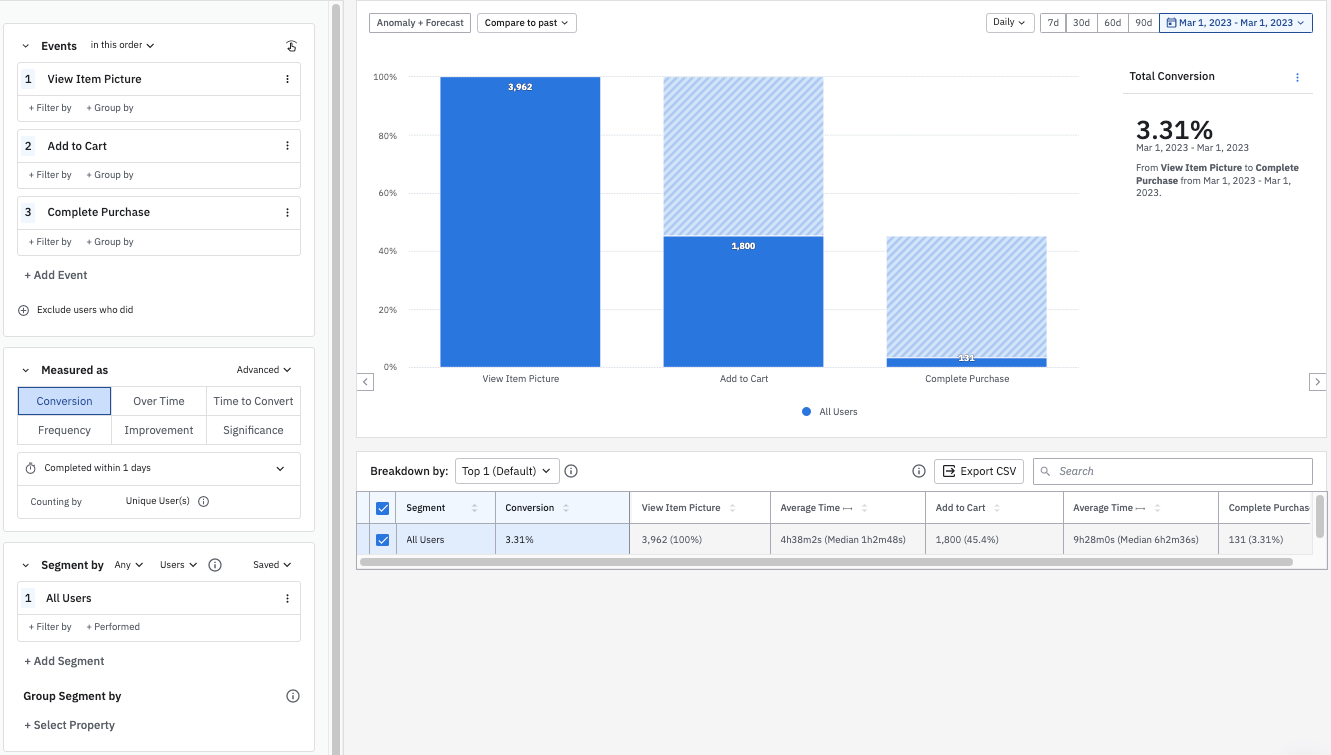
A funnel analysis explores how users are successfully navigating a defined path in your product. It will also show you where there is a drop-off.
Journeys
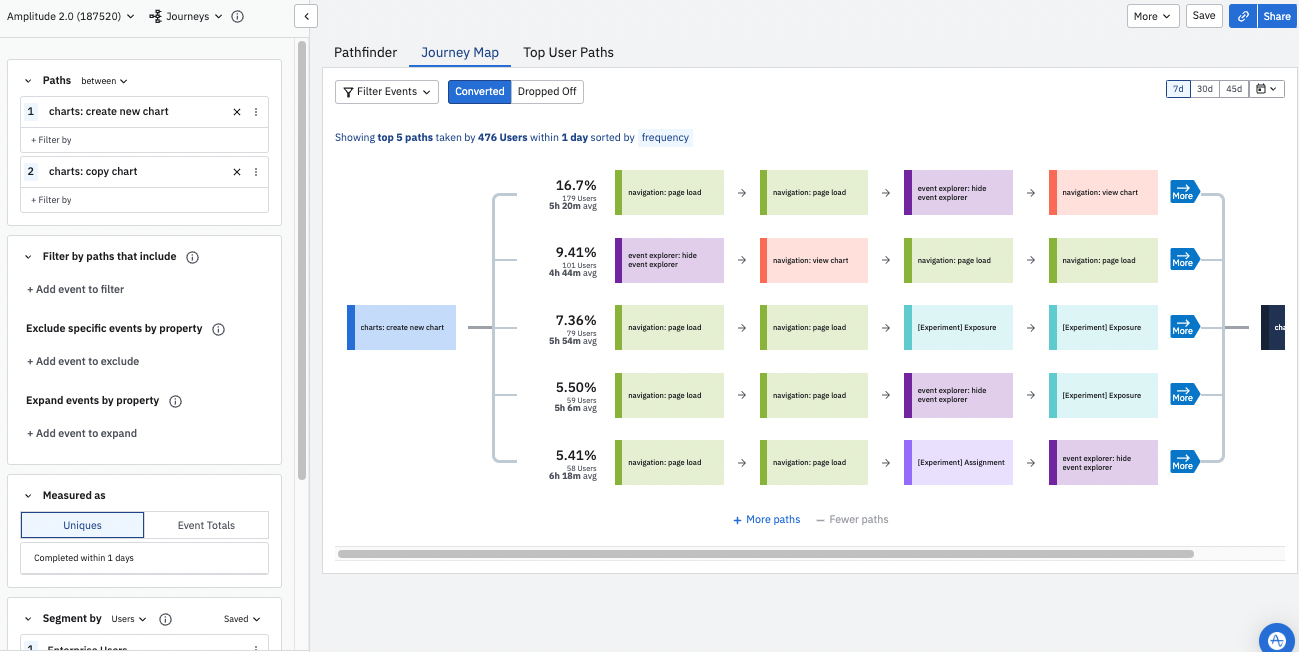
The Journeys chart allows you to inspect your users’ product journeys in two ways: By the total number of unique users who took a particular path, or by the total number of times they opted for that path.
Engagement Matrix

The Engagement Matrix enables you to identify features that aren't performing well, so you can either refactor or deprecate them, and the features that are performing best, so you can find ways to extend that engagement to other areas of your product.
Impact Analysis

The Impact Analysis chart helps you discover how first-time engagement with one feature affects the rate of another behavior.
Retain Your Users
Retention

A Retention chart shows you how often users are returning to your product after firing an initial event. This information is essential to understanding if users are coming back to your product or not.
Stickiness
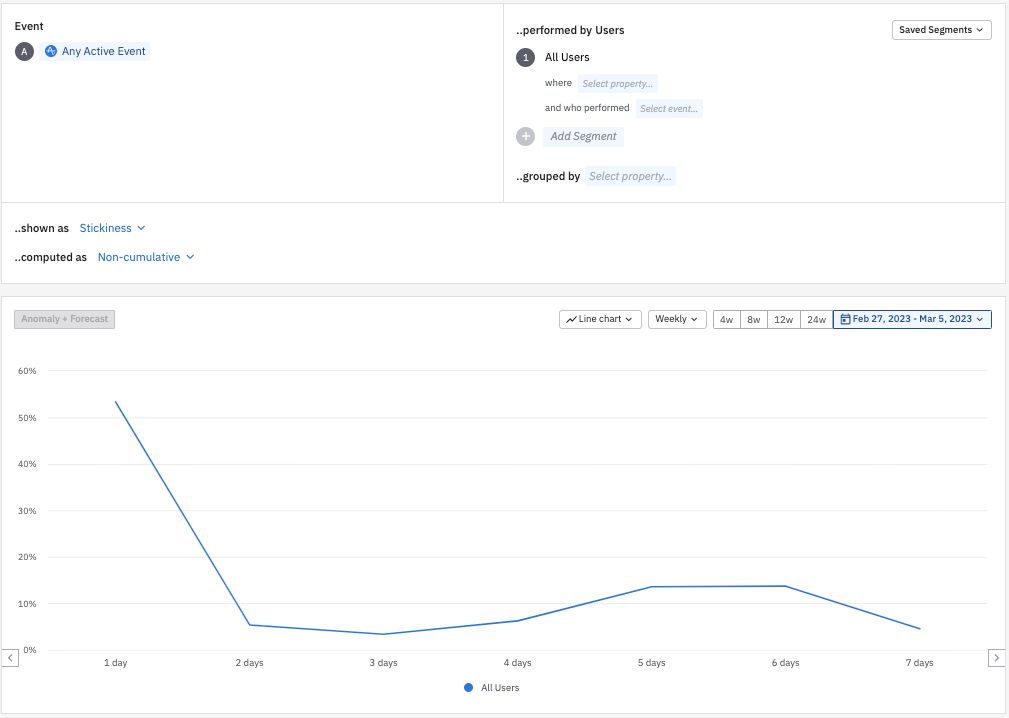
Stickiness measures the number of days a user performs an event in a weekly or monthly interval. It's designed to identify the events driving users back to your product.
Compass

Compass helps you find thresholds of user behavior that may predict long-term retention and ultimately lead to growth for your application.
Lifecycle
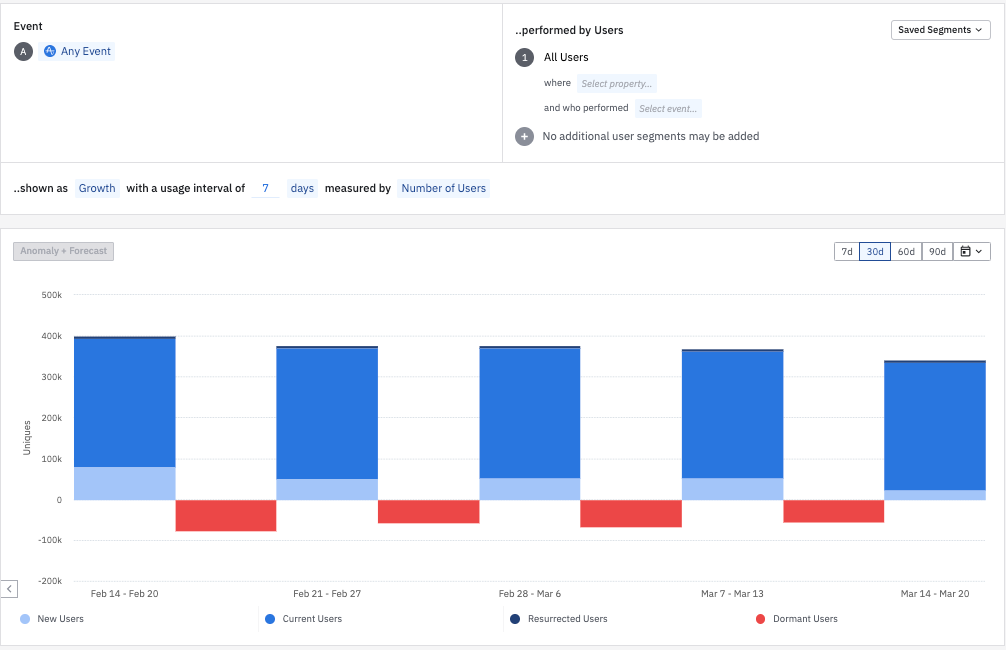
A Lifecycle analysis breaks out your active users into new, current, and resurrected categories, as well as offering a count of your churned users.
Monetize
Revenue LTV
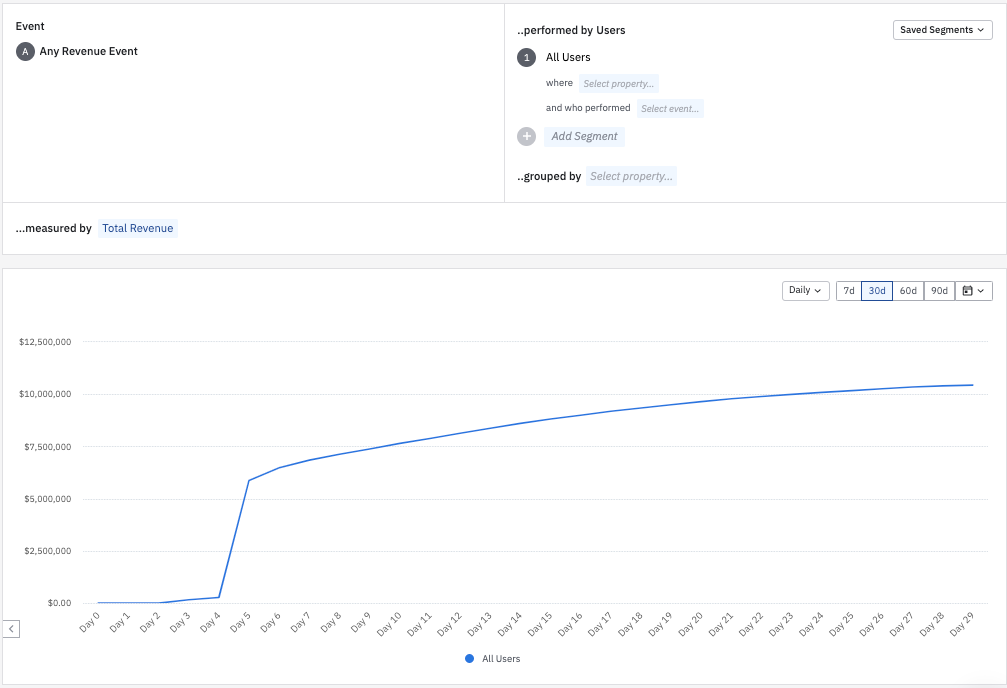
A Revenue LTV chart displays the lifetime value of your users, based on the date they became new users.
Chart access by Amplitude plan
Access to Amplitude charts varies by plan. Contact your Customer Success Manager for more information.
This table is a comparison of chart access by Amplitude plan:
| Chart | Starter | Plus | Growth | Enterprise |
| Event Segmentation | X | X | X | X |
| Data Tables | X | X | X | X |
| User Composition | X | X | X | X |
| User Sessions | X | X | X | X |
| Personas | X | X | ||
| Experiment Results | X | X | ||
| Funnel Analysis | X | X | X | X |
| Journeys | X | X | X | X |
| Engagement Matrix | X | X | ||
| Impact Analysis | X | X | ||
| Retention | X | X | X | X |
| Stickiness | X | X | X | X |
| Compass | X | X | ||
| Lifecycle | X | X | ||
| Revenue LTV | X | X |
October 16th, 2025
Need help? Contact Support
Visit Amplitude.com
Have a look at the Amplitude Blog
Learn more at Amplitude Academy
© 2025 Amplitude, Inc. All rights reserved. Amplitude is a registered trademark of Amplitude, Inc.